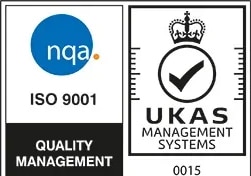
Podcast: Super Grid Transformer Charging – #1 the highlights
Summary:
Super Grid Transformer (SGT) has been a hot topic for some time (indeed Roadnight Taylor issued an open letter to Ofgem in 2023) but the issue remains unresolved with progress stalled as the industry focused on delivering Connections Reform. With key aspects of that reform now in place, attention can return to SGT charging — an area that has seen little movement compared to other code modifications already underway.
There’s growing recognition that this gap needs addressing, especially as Ofgem and network operators are beginning to show renewed interest and propose solutions — though often from specific standpoints. As the issue becomes increasingly urgent, Roadnight Taylor hosted a round table of experts from across the energy and development sectors. Representatives from Innova, Octopus Energy Generation, Centrica and Diageo shared their experiences as various types of developers and connectees.
Rather than seeking to define a final solution, the roundtable aimed to generate informed discussion that could support future working groups. Following the session, Kyle Murchie and Pete Aston recorded individual interviews with each participant to explore their specific challenges and proposed solutions.
These conversations have been produced as two podcast episodes:
- this highlights version and
- an extended edition with deeper insights from each participant.
The podcasts discuss the current SGT charging arrangements, their impact on project viability, investment decisions, and decarbonisation goals. They also explore early ideas for reform, such as socialisation of costs, codification, and improved transparency. They aim to drive the conversation forward and build momentum toward establishing a formal working group that can deliver a fair, practical solution for SGT charging.
Transcript:
00:00:28 – Kyle Murchie
Hello and welcome to another Connectology® podcast. I’m Kyle Murchie and this is Pete Aston.
00:00:34 – Pete Aston
Hello.
00:00:35 – Kyle Murchie
Hi, Pete.
Today we have had a really interesting day with a number of various parties having a working group on the topic of Super Grid Transformer Charging, SGT charging, and we then run a series of podcasts, getting into a little bit nitty gritty and pulling out the kind of key parts that have been of biggest impact and the biggest concern for each of those individuals. But it hasn’t all been doom and gloom, we’ve also been focusing a lot on the positives and the potential solutions, without spoiling all the details and covering every aspect, without further ado why don’t we hand over to some of our esteemed colleagues that were here today and having a good conversation with us. And yeah, let’s if we introduce them, so you’re going to hear from four businesses effectively.
So, we had Joe Colebrook from Innova.
00:01:34 – Pete Aston
We had David Bird from Octopus Energy Generation.
00:01:40 – Kyle Murchie
We had Helen Stack and Paul Bennett from Centrica.
00:01:46 – Pete Aston
And lastly but not least, we had Simon Wilderspin from Diageo, a demand customer, alcohol producing company.
00:01:59 – Kyle Murchie
Perfect. Why are present SGT charging arrangements really a problem for you and your business?
00:02:04 – Joe Colebrook – Innova
Yeah, well, firstly, thank you for having me on the podcast.
So, SGT charging, or Super Grid Transformer Charging, and, more widely, Connection Asset Charging, Transmission Connection Asset Charging. It’s particularly a problem for us because there is a real lack of consistency and general agreed methodology for how that cost should be passed through to us as a developer of a project, so particularly you know Innova do generation, so you know solar and energy storage projects – that’s particularly where we see this problem. But there is you know, different DNOs and DNOs get charged by the transmission owner or NESO and that cost then gets passed through from the DNO to us and different DNOs do it differently, so, distribution network owners some of them don’t charge at all, some of them choose to charge a proportion of the cost to different developers, and others say everyone has the whole cost and at some point, in the future it will be proportioned out as to depending on who’s connected. So, it just creates a lot of risk for us as a company because we have an uncertain liability, right? So, we don’t know how much that is going to cost us in the future and therefore we can’t commit to an investment business case right, like an investment in a project, because that project may not work if we’re charged the full liability, but it does work if we’re only charged what may be the lower end of the liability, right?
00:04:05 – Kyle Murchie
What sort of problems do you really see with the existing arrangements around SGT charging? What are the big challenges from your perspective and the perspective of your business?
00:04:15 – David Bird – Octopus Energy Generation
From our point of view, we’re investing in a range of different projects, but particularly at the moment we’re investing quite a lot in developers who are looking to bring forward the infrastructure we need to accelerate the transition to net zero. And for a long time now getting an affordable and timely grid connection has been one of the real challenges in England, Wales, Scotland, trying to bring these projects forward, both for generation but also, we’re funding demand type projects like green hydrogen projects and increasingly even things like data centres. So, anything that slows down or makes it too expensive to get those assets built is a real problem for us and it’s slowing down the mission of bringing these assets forward. And now, as we’re starting to see some of the grid connections come through, anything like the problems with the current charging regime that might slow that down or block projects that otherwise are ready to get built is a real issue for us.
00:05:18 – Pete Aston
From your point of view and the business point of view, is cost uncertainty the biggest problem or is absolute cost the biggest problem? Because obviously with SGT charging you’ve potentially got both. You know potentially quite high cost but potentially quite a high uncertainty as well. So you know, from a sort of investment point of view, you know are either of those two worse or …?
00:05:44 – David Bird
They’re both issues because clearly if the absolute level of cost is beyond a certain level of project just won’t make sense, or for it to make sense it might have to have such a high PPA or CFD that it’ll just never get built and won’t be competitive with other projects.
So that absolute level is definitely important. But what we really can’t do either is go into a project and make the capital commitment, put things through planning, start ordering equipment and then get sprung with a surprise months or even years later down the line that when we thought we had a certain level of exposure for the connection side of things, suddenly it’s a lot more. And if we don’t have that certainty up front, or enough certainty, you know, if we’re exposed to really quite unknown risks on how big that cost can be, it’s almost just as bad as the cost being too high and known up front. We just won’t do it because we’ll find something else we can do where the risk reward trade-off is better.
00:06:41 – Paul Bennett – Centrica
Yeah. So, I think where they are a problem for the business is, firstly, they’re inconsistent in terms of how the application is, both at distribution level and then again when it’s a customer site versus an infrastructure site. I think that leads to distortions in terms of an experience for the customer. If you have, for example, a manufacturing customer with two sites, they can have two very different experiences. With Super Grid Transformer Charging, I think the lack of certainty around cost when it’s a customer site is critical. When it’s a site where you’re given a range, so if you’re sharing it with 10 people it’s six hundred grand and if it’s on your own its six million, that’s not something that can work with a decarbonization case. We’ve certainly had that with a large-scale manufacturing site where they just can’t sign off that kind of variable cost within a decarbonization project.
Decarbonizing for businesses isn’t easy. It’s not always the best financial thing to do, and to have a huge, unmoored cost as part of that is pretty much going to kill the project in terms of their ability to proceed because it’s just too uncertain to sign off. So that’s it from a sort of like a decarbonisation perspective.
Again, from a power generation perspective, it’s just too much uncertainty, too much inconsistency and again, ultimately, from a consumer perspective, our consumers getting the best deal in terms of how the money is spent, that infrastructure sites are effectively charged through TNUOS and then put across on to customers bills, whereas some others are charged to the customer in varying ways without any way to recover. So, I think it’s that also the best deal for the consumer in terms of building the network that’s needed for the future to enable things like Clean Power 2030, lower energy bills, most efficient use of the system.
So, the fact that it’s been left for such a considerable period of time, when everybody knows that the current methodology isn’t really fit for purpose, the fact that the can just kept being kicked down the road, isn’t benefiting customers. It’s something that needs to be resolved. I think another element which we’ll touch on a bit more is will it then become a blocker to Clean Power 2030 and the need? Do you fix the problem of the queue to a degree and then a number of projects run up against that again as a problem? So again, it’s certainly significant in terms of Connections Reform as well, in the ways that it can impact and the fact that the way it currently is, unless you’re hostage to where you are. It’s not a cost that you can afford to take through because it’s just the range is so big. It’s just something that a CFO or a project director just can’t sign off.
00:10:03 – Kyle Murchie
It would be good to understand from a Diageo perspective and from what Diageo have come up against, but also what you personally have come up against in the SGT Charging world. You highlighted it as a barrier to decarbonisation, but what does that look like, what does that mean?
00:10:16 – Simon Wilderspin – Diageo
Yeah, so one of the biggest problems we have is the costing. So, if we have and the timeline. So really, if the costing is a problem, we don’t really know how much that cost is going to be. And when we do get a cost, it’s not socialized, and a typical example at Cameron Bridge, where we put an application in and we only wanted an uplift of 20 megawatts, yet the grid transformer was coming at 90, but we were having to bankroll the whole lot, so the other 70 is up for grabs. So, the company’s philosophy was well, why are we paying for the whole amount? Why aren’t we just paying nine, two ninths of that amount? So, one of the biggest problems, one of the barriers, is it’s costing and charging, and getting that over the line from a business point of view is difficult.
00:11:09 – Kyle Murchie
Yeah, because I’m just thinking in that example is a good example where it was visible to you at the time when you’re putting the application in and having that conversation with the DNO, but of course you weren’t able to move that forward. So, it doesn’t get registered at all. So, you know, while you’re seeing these issues, you’re not ultimately able to resolve them there and then, because I assume that the business can’t take on that risk?
00:11:38 – Simon Wilderspin
No, we can’t take it on because two reasons. First of all, we don’t know how much we’re signing up for, and the second one is we can’t allocate that asset against the business because we are effectively bankrolling somebody else. So, the asset or the capitalization of that money can’t be allocated, I cannot get budget for it, so it’s a blocker, an immediate blocker. I can’t go forward.
00:12:01 – Kyle Murchie
I suppose just for our listeners. I suppose, in terms of your context, you’re coming at it very much from a predominantly demand perspective. Any generation is obviously there to support your demand, your underlying demand, and you don’t have the luxury where you can choose where to develop.
00:12:16 – Pete Aston
The sort of counterpoint to that is a grid scale battery which you know it could be in Glasgow, it could be in Exeter, it could be in Wales. You know it sort of doesn’t really matter where it goes, because there’s, you know, but you’re not going to move the distillery or processing plant or something like that. And I think that’s a general issue with demand compared to generation as well, isn’t it? Demand is generally a bit less flexible than generation in terms of location. Not all demand, but a lot of it.
00:12:52 – Kyle Murchie
You know, we’re not here to just air the problems. What solutions, I know we’ve been talking about solutions today as part of a wider working group, but from your perspective and from Innova’s perspective, what do you see as potential solutions?
00:13:08 – Joe Colebrook
So, I mean, to start with, it’s a very complicated issue, right? This, you have to be able to understand electrical engineering and how you sort of build up a connection and cause Super Grid Transformer Reinforcements to be needed. You also need to understand how Transmission Network Charging works, how Distribution Network Charging works. It covers a lot of areas and it’s a very complex thing. So, I wouldn’t say I have a clear solution. I think there are many ideas that have been explored, either through the strategic connections group or by Roadnight Taylor and ourselves, and I think that the next step is to sort of, you know, have a more structured discussion, so a working group or to actually work out what which one of those solutions is the best one, and so you know, so I think, the best way to do this, I sit on the Connections Use of Systems Code panel. I’m a panel member, so I’m quite a big advocate of codifying things and having things clearly written down in what is essentially a contract, a legal text, so that it’s very clear how to follow for everyone, both distribution network operators, transmission network operators actually follow what is the rules and what to do. So, we need to codify a set of rules, because currently the rules don’t exist for this situation. So, we need to codify a set of rules, and you know, I think there are a couple of different options. I think that from our point of view, probably something which sort of, at the very minimum, caps our exposure. But I think Super Grid Transformers are such a as an asset, they benefit multiple customers, both generations, you know, demand users and it can be often quite difficult to know which, how many people they benefit. And obviously, as more people come and connect, they create a lot of capacity which allows other people to come and connect lower down in the in the distribution network. So, I think there’s also potential benefits that are not costed for when you, when they re first built and they last 40 years. So, I think that probably going down a socialization route, either through a TNUOS, so Transmission Network System Use of Systems, or Distribution Use of Systems, probably in my view, is easier or more, is more fair. But and Transmission Use of System is probably the easier way to do that from a legal texts perspective and having a simplified code, so I’m going to TNUOS socialisation, but I think a working group would help get everyone’s view.
00:16:19 – David Bird
If you get something where there’s that risk and uncertainty, and you’ve got a limited number of people in your team, a limited number of pounds that you can spend on bringing stuff through, more likely than not you’re just going to put that one on ice, if not drop it completely, and target somewhere where you can get something done, with more certainty.
00:16:38 – Pete Aston
So, whilst if you have accepted an offer, you could potentially have conversations and maybe work something through in the future. But actually, if that’s taking the people, resource and money to do that, then why not look somewhere else?
00:16:57 – David Bird
Yeah, exactly that. There’s finite time and finite money, so to put a lot of time and money into something that might never work. If you’ve got other things that could, you’ll target those other things.
00:17:09 – Kyle Murchie
But thinking ahead towards an end solution, what’s your view? What would an end solution potentially look like, based on what you know today?
00:17:19 – David Bird
Yeah, well, I think that’s where, again, we talked a bit about Connections Reform, but also everything that’s been going on around CP 2030, around the sort of strategic planning around what sort of assets do we need and where do we need them to be.
Anything that happens on this sort of specific issue, I think, needs to really tie in neatly with that. So, again, if the effort’s gone in to identify what we need and where it needs to be, then we need a charging system that supports that rather than sort of fights against it. So, we need those two things to come together. But we always need to be mindful that one of the main reasons we’re doing all of this is to deliver a system which is affordable for the end consumer. So, again, it needs to be done in a way that we’re not kind of creating a load of extra cost and inefficiency or blocking innovation in the way that consumers can be sent to price signals on when to consume and how. So those, I think, are really important parts of the end solution and how it sort of interacts with the much bigger picture drive to this massively, increasingly electrified and sort of consumer-led system. It’s all got to fit together rather than fight against each other.
00:18:35 – Kyle Murchie
Yeah, I think we’ve been talking about this today that it’s quite complicated when you get into the nuts and bolts. But it doesn’t just stand alone – it really has to be part of the wider development as an industry and the wider, not just Connections Reform, but the wider market reform.
00:18:50 – David Bird
Yeah, absolutely. And all the more reason that it needs to come through quickly, because those other processes are coming to a point where people are supposed to be making decisions on them and so we need sort of this issue fixed alongside it to stop those important sorts of strategic decisions just being delayed further.
00:19:15 – Kyle Murchie
So, with new Gate 2 offers coming out for DNO connected customers from what maybe early next year, early 2026, it doesn’t give us much time really. We’re really saying that we need to have a solution in place by that time. So, this is complex but also pretty urgent.
00:19:34 – Helen Sharp – Centrica
Yes, I think that’s right and ideally we need a clear and simple solution that could be implemented in time for when those offers come out, but equally then that doesn’t constrain, because there are a lot of potential future developments coming around, potential reforms to the charging regime, so we want something. There should be something clear and simple that doesn’t constrain the potential for future reforms that need a longer time to develop.
00:20:13 – Paul Bennett – Centrica
I think the other thing is that this is a particular can that’s been kicked down the road for years on end. I think I just had a quick look, and I can see it being remarked as a problem in 2021. And I’m sure it was a problem before that, and it’s got to come to a point where the can, can no longer be kicked down the road. It is something that needs to be resolved. It needs to resolved with urgency so that it can go into the connection offers that are going to come out.
00:20:42 – Pete Aston
In an ideal world, I guess you could argue that maybe you and all your competitors could, you know, collaborate together in some wonderful consortium and you know and fund together, or you know, a grid supply point and you’re all picking up your fair share of it, and so on. But in reality, is that sort of thing even possible? You know, it sounds nice in principle, but the mechanics of doing that just sound really complicated.
00:21:15 – Simon Wilderspin
No, you need a consortium to push it forward and. I think the DNOs and even government need to drive it.
00:21:22 – Kyle Murchie
Yeah, because you might be able to share, have a consortium where you’re able to share certain assets, but when you get to it’s worth noting as well you’re not necessarily looking to become a transmission connected customer. Most of your sites are LV, HV supplied. So, if you’re wanting to stay at that level, which for 5 megawatts you should be able to do, it’s when you look at it from a scale point of view, that’s then triggering the industry works.
00:21:46 – Simon Wilderspin
You know, we’re not scared to spend the money and we’re happy to pay our fair share. But our fair share.
I think it needs to be socialised. And I go back to our point with Cameron Bridge, if we take 20-megawatts out of a 90-megawatt SGT, then we pay pro rata and that’s fine. We don’t mind doing that, but we’re not paying the whole lot. But then I guess who’s going to pay the other?
It has to be led by government, I think, because we’re talking billions here.
00:22:19 – Kyle Murchie
Yeah, so effectively, I think, because we were kind of pulling out earlier it was part of that the SSEP, the Strategic Spatial Energy Plan kind of at that level of saying this is what we need, therefore, this is how it’s going to be driven forward and the charging, therefore, whether it’s socialised or if it’s the sounds of it, you would be open to taking a portion of it, potentially as a kind of half, but not necessarily…
00:22:42 – Simon Wilderspin
I don’t think it’s right we pay the whole lot, and then the DNO say to us well, if something comes along in 10 years, we give you a rebate. Well, how much, you know, is it pro rata? Is it at year nine? Is it only 10%? You know it doesn’t make sense that we do this.
00:22:59 – Pete Aston
And I think the complexity of the situation is that, because of course you are applying to the DNO, and the DNO is then applying to the transmission company and the transmission company is giving the DNO an offer that says this new GSP costs 50 million, and the DNO is turning around to you and going oh no, here’s 50 million.
00:23:17 – Kyle Murchie
Via NESO as well.
00:23:18 – Pete Aston
Yeah. So, if there is socialisation, who pays it? Does the DNO pick it up, and how does the transmission company work it out?
00:23:25 – Simon Wilderspin
It needs to be simplified, but I think probably government needs to take a lead in it.
00:23:30 – Pete Aston
Well, there we have it. We’ve heard from four different companies their perspectives on SGT charging. It’s been a really interesting conversation. It’s been a great day, but I guess we’ve got to sort of bring it to a close to wrap this up. So, firstly, thank you to all those who participated in the podcast. It’s been brilliant to have your, your engagement, but I guess we’re now looking for a call to action from this Kyle. This wasn’t just a talking shop. So, yeah, what your thoughts on what next steps might look like for this, this particular subject?
00:24:08 – Kyle Murchie
Yeah, I think we, you know, one thing that came out today really was the urgency. We don’t really have the luxury as an industry to kick this into 2026 and allow Connections Reform to happen and then this to be picked up. We need to be, you know, the call to action is we need to do something now. So really it’s an engagement from Ofgem, from the ENA, from the networks as well and from NESO that this does need to be picked up as a further conversation with urgency, and also that if a party does raise a Code Mod that, given the time that it needs, you know i.e. does get branded as urgent, as seen as an urgent Code Mod, and the working group then is put together so that realistically, if one was looked at this summer, there’s every possibility a solution could be found before Gate 2 offers come out. I think that’s where we need to get to.
00:25:01 – Pete Aston
I think the danger is that if this doesn’t happen, there could be a real impact on the deliverability of Connections Reform projects, and that would just be a shame given all the hard work the industry has put in to then sort of fall on this hurdle. So yeah, that urgency just needs that dialogue and, like you said, it needs a working group so that people can sit down, because it’s not easy. We completely acknowledge this is quite a complicated subject. It covers transmission, distribution, capital works, use of system charging. You know that the whole piece is – it’s really difficult, but that’s why I need a working group to pull all those threads together and come up with a good solution.
00:25:40 – Kyle Murchie
Absolutely, I think we’ve laid some good foundations today on top of you know all the great work that has been done. You know there has been good conversations in the past. But it’s taking that to, you know, taking it by the bull, by the horns, effectively and really moving that forward so that we get some positive solutions. It was very easy to look at it from a high level, thinking the scale is, or certainly the visible scale, maybe as we mentioned earlier is maybe relatively small in the grand scheme of the full queue, but the impact, you know, talking to Diageo at the end, there, that’s really clear that there’s a whole industry there that’s sitting behind these sorts of changes.
00:26:20 – Pete Aston
And also, I’m conscious that all those people who’ve been sitting on Connections Reform working groups are going to be looking for something else to do.
00:26:28 – Kyle Murchie
Everyone’s going to have free time. They’ve done all their gate, you know, put through their Gate 2 evidence.
00:26:33 – Pete Aston
What else are they going to do over the summer? Let’s have a working group.
00:26:36 – Kyle Murchie
Cancel holidays. Let’s have another big working group over the summer.
00:26:40 – Pete Aston
But, joking aside, I think it does need to happen to talk it through.
00:26:45 – Kyle Murchie
Perfect. Thank you very much again for joining this podcast. Hopefully it’s been really informative, and we look forward to seeing you all soon.
00:26:56 – Pete Aston
Thanks everyone.





